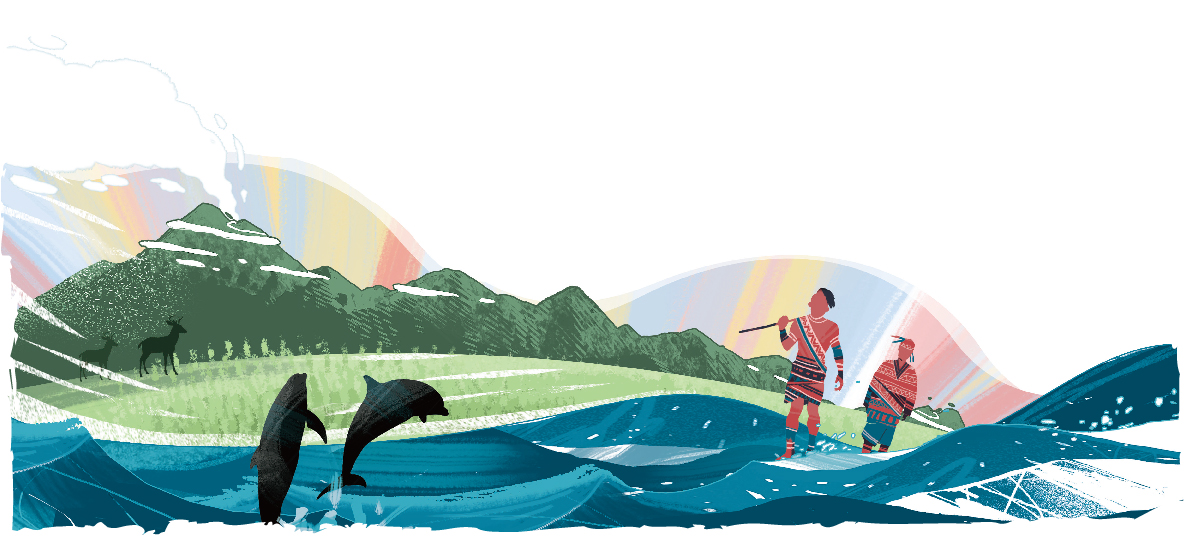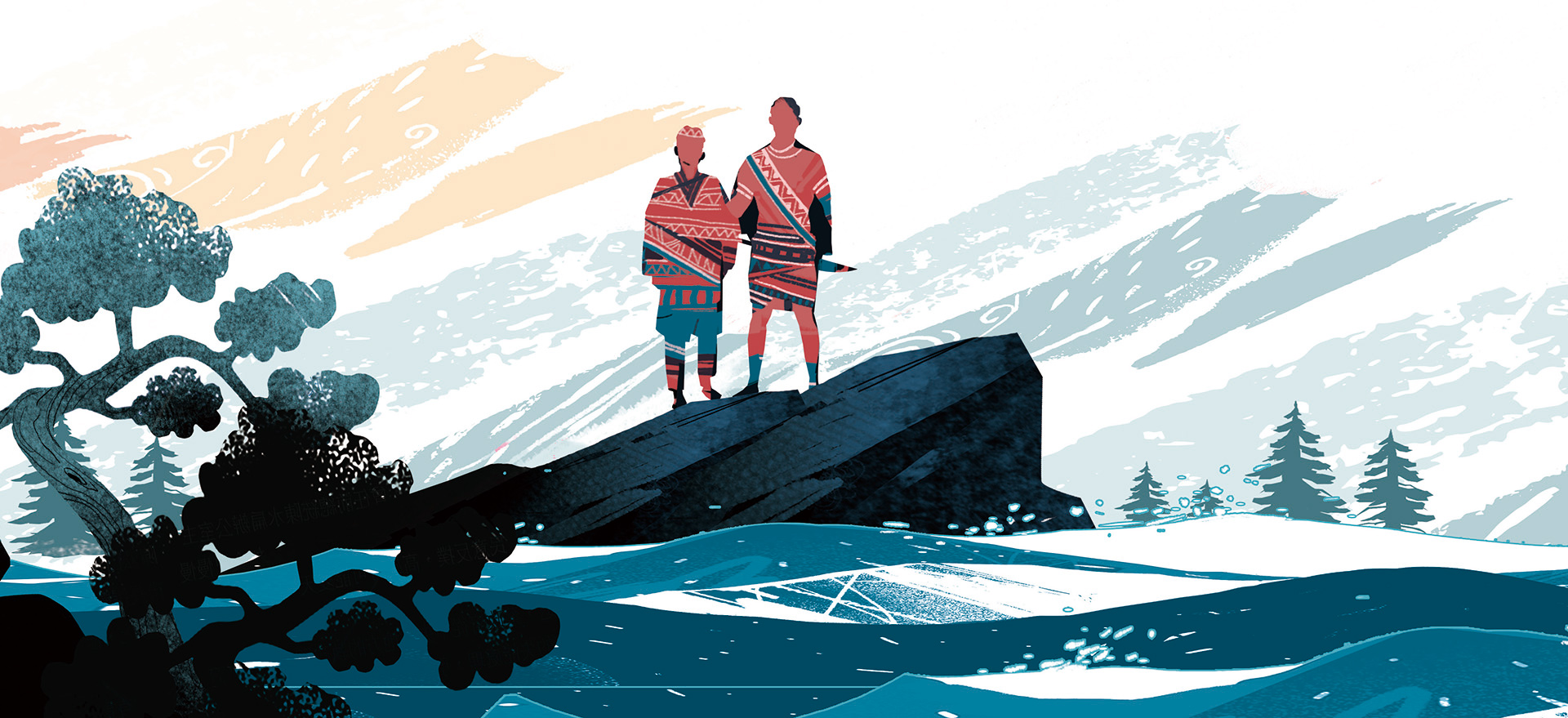“In the six hundredth year of Noah's life, on the seventeenth day of the second month, all the fountains of the great deep were broken up, and the windows of heaven were opened.”
- Genesis
Floods in ancient times can be found in the legends of countries all around the world. A long, long time ago, a big flood destroyed everything in the world, which was a catastrophe for both humans and nature. But after the disaster, new civilizations and life orders were created.
For many people, the story of Noah’s Ark tells us not only about the occurrence of a great flood that destroyed the ancient world, but also tells us of the opportunity to rise again from the debris. That story is not unique. Legends of floods can be found from oral interpretations and records in China, Greece, India, West Asia, Americas, and Africa. According to statistics, among 254 major ethnic groups and 84 language areas around the world have legends about great floods. We could say that floods are a part of the collective memory and nightmares of our human ancestors.
Located at the border of the spacious Eurasian Continent and the vast Pacific Ocean, Taiwan’s climate is jointly influenced by both land ocean. Each year at the end of spring and before the arrival of winter, abundant rainfall is brought to the island, along with devastating typhoons. From ancient times up until now, experiences of floods have naturally left their impression on the people of Taiwan.
Indigenous peoples living in such a natural environment certainly have fought against floods and there remains today many touching and meaningful legends and life wisdoms about floods and co-existence. These legends have been handed down from generation to generation orally. For indigenous peoples, these are valuable historical texts through which they can trace back, restore and experience the lives of their ancestors.

Evacuate to the High Mountains to Avoid Floods;
Assist Animals for Rebirth
A long, long time ago, Taiwan was a great flat plane where people lived happily, until a big storm struck Taiwan continuously for seven days and nights. (According to the Big Lakes Legend of the Atayal people, the storm came because of a marriage between a brother and sister that angered their ancestral spirits and gods). Floods destroyed many houses and took the lives of many people and animals, and eroded farm land. All survivors were led by the community leader to evacuate to Dajianshan (Dajian Mountain).
However, the flood did not go away and all the community people prayed to their ancestral spirits and gods. First, a healthy dog was offered as a sacrifice, but the flood just became more serious. An old lady was then sacrificed by drowning. The flood remained. Finally, the surviving community members decided to offer the most beautiful girl in the community and in order to save his people, the leader offered his daughter. (According to the Legend of Great Lakes, the married couple of a brother and sister were offered). After his daughter was thrown into the water, the flood was drained and various types of fresh fish and shrimps were left on land. The Atayal people then successfully returned to their homeland to begin a new life. This flooded area became the topography we see now, with its different elevation levels.
The Atayal flood legend is a typical one amongst indigenous people in that the community members evacuate to the high mountains to avoid the flood, and the flood finally subsides because of offerings. The rebirth is gained. Bunun has a similar flood legend, but their story includes the saving of animals from the flood, which reflects their ideas about the co-existence of humans and nature.
In ancient times, according to Bunun legend, a giant snake got stuck in the river and flooded the land. The Bunun people and their animals evacuated to the highest mountain, Jade Mountain. But, as time went by, all the food was gradually consumed and the flood did not go away. The Bunun people therefore had to sustain their lives by hunting. They killed the strongest animals however, and let the weak ones run away.
During the rushed evacuation, the Bunun people forgot to bring any fire starters with them, and without fire, cooking became impossible. The cold weather in the mountain also brought them many inconveniences in their lives. One day, someone found some smoke on Zhuoda Great Mountain (There is a different legend about going from Zhuoda Great Mountain to Jade Mountain to find a fire starter). A toad was dispatched to fetch fire but it accidentally got the fire starter wet and extinguished the fire. The toad failed to carry out his assignment. A bird was then sent, but it also failed. In the end, a Kaipisi bird successfully brought home the fire starter. A gigantic crab volunteered to fight with the giant snake stuck in the river and it used its big claws to cut open the belly of the snake. After the snake died, the flood eventually subsided. People then returned to their land and scattered to develop.
In this Bunun legend, the toad and Kaipisi bird made contributions to the Bunun people and they thus promise not to kill toads and Kaipisi birds. The Bunun people In central Taiwan’s Luan Settlement, adds to the legend that after the flood all grains were lost and only a grain of wheat was left on Tabikannad grass. Tabikannad grass has historically been well conserved and removal of them is strictly prohibited.

Raising the Next Generation!
Getting Married between Close Relatives after the Flood
Settled along the long and narrow coastal mountains and the Costal Range, the Amis people - compared to other indigenous groups boast a diverse variety of contents within their flood legends. Details also vary. Here is an example of a flood legend from the Amis’ Malan community:
Malan’s ancestors lived near Jilakashan (now Hualien Port) until one day, a devastating earthquake occurred. Hot currents floating underground became a flood which covered the whole land. Almost every living thing was destroyed. Only one brother and his two sisters survived, who rode on a hibiscus to drift away. They moved along the coastline but found no place to go ashore. When they were desperately trying to find land, the elder sister became too exhausted and turned into a stone statue. The hibiscus was damaged by the flood and the surviving brother and sister depended on each other to live at sea.
After growing up, in order to extend the life of humans, they asked the sun when it was up about whether or not they should get married. The sun gave its permission and two tied the knot. However, they gave a birth to a mysterious monster and they threw it into the river. The monster became the ancestor of fish and crabs. On day two, the moon told them that because they were siblings, a grass mat would be placed between them so that they could conceive a regular human child. They followed the instructions given by the moon but a white rock was born instead. They thought the moon must have played a trick on them and they wanted to throw the white rock away. The moon, however, advised them, if they want to have their wish come true, they had to keep the white rock safe. The siblings listened to the suggestion of the moon.
Many years later, the brother passed away and the surviving sister held the white rock to comfort herself from loneliness; the moon tried to comfort her by saying that the feelings of loneliness were just temporary. After five days, four kids popped out from the white rock, two bare-footed and two with shoes. The younger sister, according to the legend, raised the two bare-footed children and let them get married in order to raise the next generation, while the two kids with shoes became ancestors of the Han people.
The Pazeh people also have a legend about a married sister and brother couple who raise the next generation after the flood. According to legend, the ancestors of the Pazeh people are from the Makiyawasu who descended from heaven and lived on the planes of Central Taiwan. They raised many generations. One day, a flood suddenly occurred which buried the village, farm lands, people, and animals under water. Only two grandsons of Makiyawasu escaped, the elder sister, Sabongakaisi, and the younger brother, Wanakaisi. They fled to the mountains and after about six days, the flood went away and they returned to the plane and built the Waowarutsaru Community (meaning upper village). Later, they got married and had two kids. They then cut their kids into pieces and blew air on them, which transformed them into complete young men. These young men scattered to settle down and had their own communities (the lower villages). About 16 settlements were built on Taichung Plane.

Roll with All the Punches;
Let us Fight until the Last Moment!
In summary, indigenous peoples have their own flood legends and contents which are specific to their geographical locations. The structure, however, is identical. In general, there are two types of flood legends.
The first is “evacuation to the mountains.” In ancient times, floods frequently occurred (caused by example monsters, the anger of the gods or great earthquakes or volcanoes) that resulted in the mass destruction of humans and animals while the survivors evacuated to the mountains to wait until the floods subsided. Then humans began raising the next generation for new communities and new lives.
The second type is “taking a boat or a hibiscus.” When a flood occurred, humans living on the plane suffered devastating destruction and only a few relied on floating or fixed objects during the flood. The Amis, for example, used the hibiscus to save their lives; the Bunun people relied on a weaving machine; and the Paiwan and Saysiyat peoples had some of their people grasp vine plants to save their lives. . Finally, according to the legends, people might have floated to a new place or simply waited for the floods to subside before restoring their lives and rebuilding their homes and civilizations.
Furthermore, among legends of floods in Taiwan’s indigenous groups, two things are observed: according to the Ameis, Beinan, Rukai, Paiwan, and Pazeh and Gemalan of Pinpu peoples, the generation raised after the floods came from a marriage between siblings. Initially, their children were born with disabilities or as non-human creatures. Then, a remedy was offered and the children were then born normally. Secondly, after the floods, people suffered devastating destruction but they were given opportunities to develop further. In the legends of the Paiwan, Bunun, Tsou and Rukai peoples, humans relied on red-billed hornbills, frogs, Formosan Reeve's muntjacs and deer, or were even inspired by fireflys to acquire fire and to relive through “ a life of fire.” Both Bunun and Paiwan legends mention this process for re-acquiring seeds and land cultivation.
For tribal ancestors, the occurrence of big floods was a disaster that could not be forgotten, but these legends also demonstrate the persistence and hardworking strength of the indigenous groups ability to survive.

The Rebirth of Civilization
after Flooding
Flood legends play an important role in the heritage of human civilization, and the majority of these legends end with the beginning of new life, the initiation of civilization, and the development of cultures and customs. The aforementioned flood legends all end with the beginning of new life and the raising of future generations. The legend of Bunun has developed the principle of the relationship between humans and animals, as well as customs and taboos that have heavily affected future generations.
Sibling marriages were the only option after the occurrence of big floods, but in the legends, the risk of such a marriage is clearly described. In the Atayal legend, the sibling marriage was a taboo that mainly resulted in a flood, after which new technology, ethnic groups, and living environments were built as the beginning for future generations. Floods have religious cimplications, in that they cleanse the sins and abnormalities of humans for a fresh start. Flood legends serve as an important milestone that begins civilization and the world’s creation.
- Reference -
Books and Journals
鹿憶鹿,《粟種與火種: 臺灣原住民族的神話與傳說》臺北市,秀威經典,2017年。
巴蘇亞˙博伊哲努(浦忠成),《臺灣原住民的口傳文學》,臺北市,常民文化,1996年。
巴蘇亞˙博伊哲努(浦忠成),《台灣原住民族文學史綱》,臺北市,里仁書局,2009年。
陳千武譯述,《臺灣原住民的母語傳說》,臺北市,臺原出版,1990。
李宜靜,〈玉山傳說中的原住民〉,《康寧學報16期》,臺北市,康寧醫護暨管理專科學校,2014年6月。
鄒濬智,〈台灣原住民神話與中國神話的同質性探討〉《臺灣源流42期》,臺中市,台灣省姓氏研究學會,2008年3月。
Online Data
文化部,《台灣大百科全書》,http://taiwanpedia.culture.tw/。
阿莫說故事,〈台灣原住民口傳歷史〉,http://amostory.dmtip.gov.tw/index.htm。






